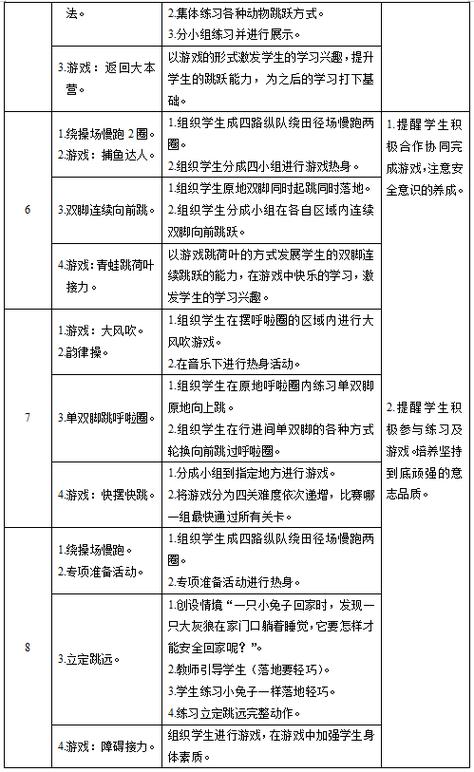Physical education plays a crucial role in the holistic development of students, fostering physical fitness, teamwork, and sportsmanship. Crafting an effective curriculum for seventhgrade students requires a balance between skill development, physical activity, and theoretical understanding. This comprehensive plan aims to outline key components and activities for a wellrounded physical education program.
1.
2.
3.
4.
5.
Dynamic stretching exercises to prepare muscles for physical activity.
Cardiovascular activities such as jogging or jumping jacks to elevate heart rate.
Rotating units focusing on fundamental skills of various sports such as basketball, soccer, volleyball, and track and field.
Emphasis on proper techniques, rules, and strategies of each sport.
Circuit training incorporating bodyweight exercises like pushups, situps, squats, and lunges.
Introduction to basic principles of strength training and flexibility exercises.
Organized games and activities to apply learned skills in a competitive setting.
Rotation through team sports like basketball, soccer, and ultimate frisbee to promote teamwork and sportsmanship.
Static stretching to improve flexibility and prevent muscle soreness.

Group reflection on the day's activities, focusing on successes, challenges, and areas for improvement.
Integrate health education topics into the curriculum, covering nutrition, hydration, injury prevention, and the benefits of regular physical activity.
Guest speakers or multimedia resources can supplement classroom discussions on healthrelated topics.
Assess students' progress through a combination of skill demonstrations, participation in activities, and written quizzes on sports rules and health topics.
Provide constructive feedback to students, focusing on areas for improvement and setting individualized goals for skill development and fitness improvement.
Modify activities and exercises to accommodate students with varying skill levels and physical abilities.
Encourage a supportive and inclusive environment where all students feel valued and empowered to participate.
A welldesigned physical education curriculum for seventhgrade students should encompass a balance of skill development, physical activity, health education, and personal growth. By providing a variety of activities and fostering a supportive learning environment, educators can empower students to lead healthy, active lifestyles and develop lifelong habits of physical fitness and wellness.
